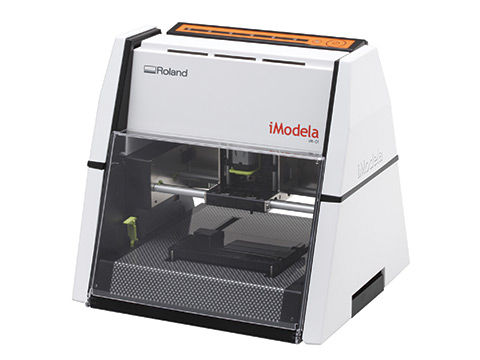Soporte Técnico Para

Búsqueda IM-01 Documents & Knowledge Base Articles
Expandir Todo | Desplegar Todo
Application Resources ( 1 )
Milling tool referacne guide including end mill specifications for individual tools as well as long Reach and short reach tool kits.
174.11 KB
Collateral (Artwork) ( 1 )
Driver ( 3 )
Windows 10
This document PDF lists instructions of how to install Roland drivers on Windows 10.
1.67 MB
Windows 8, Windows 7
This link will take you to the support site for iModela. You will find all drivers and software updates on this page.
380.54 KB
MSDS ( 1 )
Owner & User Manual ( 1 )
This link will take you to the iModela support site. You will be able find manuals, repair guides, FAQ, driver and software updates, and application guides on this site.
391.70 KB
Setup & Install Guides ( 1 )
Most Roland devices are supplied with a one year standard manufacturers warranty, but by registering your device within 60 days of purchase, your product could qualify for an extended warranty of up to 3 years.
78.27 KB
Software Updates ( 1 )
This link will take you to the iModela support page. You will be able to find the latest versions of drivers and software, as well as other support information.
386.82 KB
Training Videos ( 1 )
Follow this link to the Roland Academy Webinars On-Demand webpage. Then filter through the videos to find a training session that suits your needs.
57.43 KB
Knowledge Base Articles ( 4 )
HELP!! I can't find the driver I need for my Roland!
Where can I find more information about my iModela?
All Roland devices with a USB, Parallel (LPT), or Serial (COM) port need a driver to communicate with a computer. For Roland products compatible with Apple Macintosh operating systems, a plugin is used with Adobe Illustrator. For Roland devices with an Ethernet port, the output software (e.g. - RIP)includes the driver as part of the application.
When outputting a design to your engraver or milling machine, the software needs to be able to translate commands to the device. These commands tell the machine how fast to mill, at what revolutions per minute (RPM), and where to mill in 3D space. This is what makes up a toolpath. A Strategy is a combination of tool movements, material properties, software algorithms, and tool characteristics.